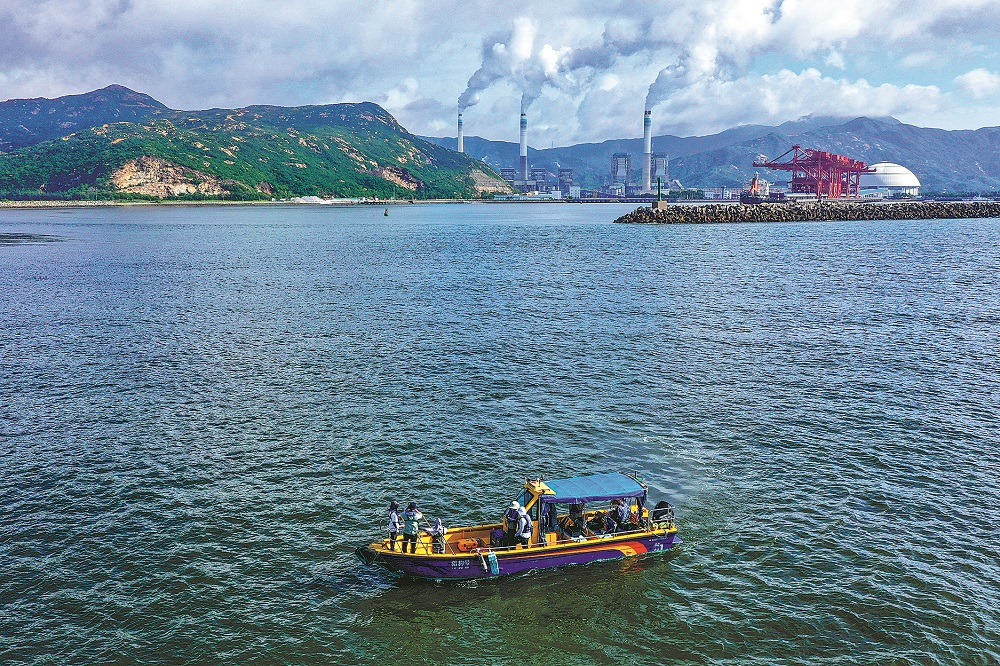
The scientific research vessel carrying French researcher Agathe Serres sails near Jiangmen, Guangdong province, on Aug 24. LIU QICHENG/SANYA DAILY
When Agathe Serres was 10, her family moved from Paris to Quimper, a French city known for its links with the sea.
Growing up near the coast, she soon began her love affair with cetaceans — aquatic mammals that include whales, dolphins and porpoises.
Serres, now 31, developed a deep fascination with the ocean, drawn to the idea of living as freely as the cetaceans.
But distressing news about the animals emerged from time to time. Whales can have a prolonged maturation period before becoming reproductive and they give birth to a single calf per pregnancy; amid the increasing occurrence of human activities in the marine habitat, many cetacean species are now endangered, according to latest research.
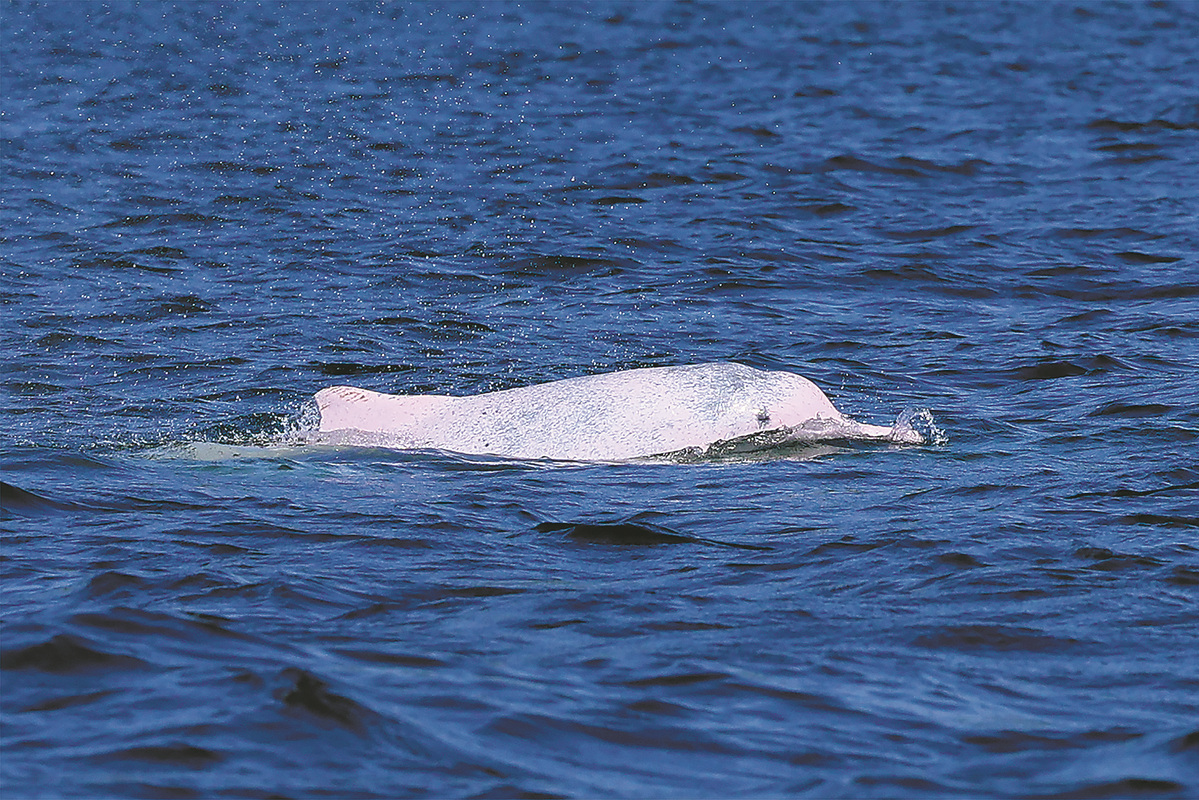
A Chinese white dolphin is spotted during a research trip with French researcher Agathe Serres in Jiangmen on Aug 24. LIU QICHENG/SANYA DAILY
Recent findings of a significant increase in the number of China's Yangtze finless porpoises, climbing to more than 1,200 or a rise of over 23 percent in the past few years, fueled renewed optimism among cetacean conservation researchers like Serres.
"The case of the Yangtze finless porpoise proves that if the Chinese authorities want to do a good job and implement a policy, they can do it," she said, adding that she believes another vulnerable species, the Chinese white dolphin, can avoid extinction.
For the past three years, as an assistant researcher at the Institute of Deep-sea Science and Engineering of the Chinese Academy of Sciences, Serres has traveled to Guangdong and Hainan provinces and the Guangxi Zhuang autonomous region, carrying out research and conservation work for the Chinese white dolphin.
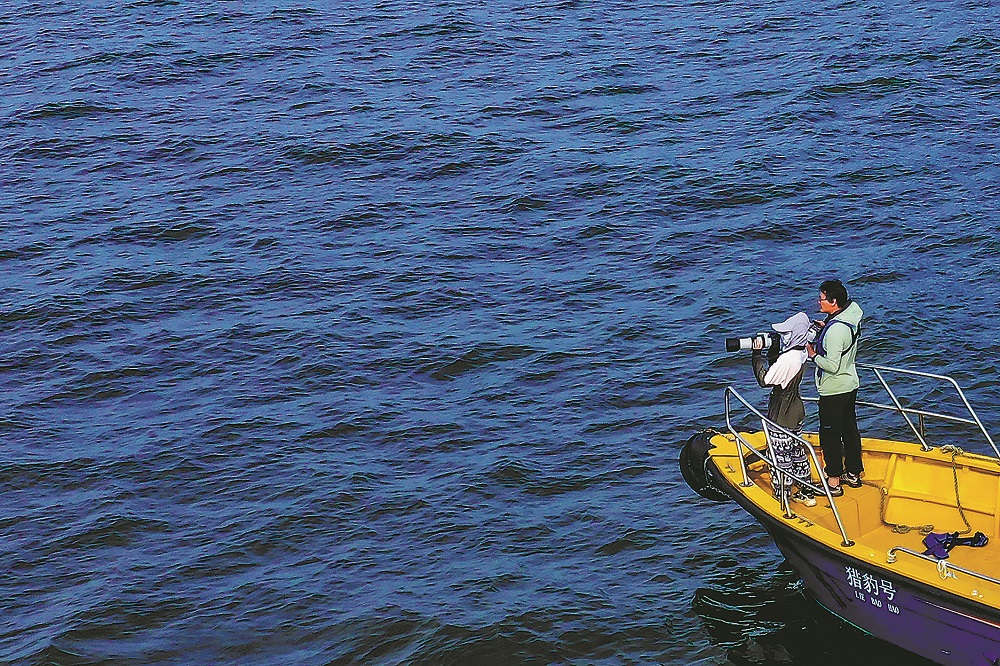
French researcher Agathe Serres (left) takes photos of Chinese white dolphins near Jiangmen on Aug 23. LIU QICHENG/SANYA DAILY
Known to many people as the "panda of the ocean", the adult humpback dolphins appear pink under sunlight, earning them the nickname "pink dolphins". The cetacean was designated as a national first-class protected wild animal in China in 1988. In 2008, it was classified as "vulnerable" on the International Union for Conservation of Nature's Red List of Threatened Species.
From August to September, Serres navigated the Pearl River estuary, journeying downstream to the Chinese White Dolphin Nature Reserve in Jiangmen, Guangdong. She spent five consecutive days at sea, observing and sailing for over eight hours a day.
Serres then joined a research vessel three more times, venturing into the South China Sea to gather ecological, acoustic and behavioral data on common cetacean species, while also expanding her understanding of the habitat range of rarer cetacean species.
"I hope that one day, I will see pods of Chinese white dolphins leaping joyfully across the sea, playing with people, delighted by an endless abundance of fish, free from worries of a fractured home," Serres said.

Agathe Serres and her colleague Shi Yihuang review research footage of their trip on Aug 24. LIU QICHENG/SANYA DAILY
Li Songhai, a professor at the Institute of Deep-sea Science and Engineering, said that establishing nature reserves is currently the most effective way to protect the Chinese white dolphin.
"The white dolphins don't ask for much — just a one-kilometer buffer beyond the coastline, designated as their habitat. With dedicated nature reserves and systematic planning, we can ensure their protection," Li said.
"The vast ocean should hold a place for the Chinese white dolphin," Serres said, adding that protecting the Chinese white dolphin and marine life is ultimately about safeguarding Earth's ecosystem and preserving the home that humans depend on.
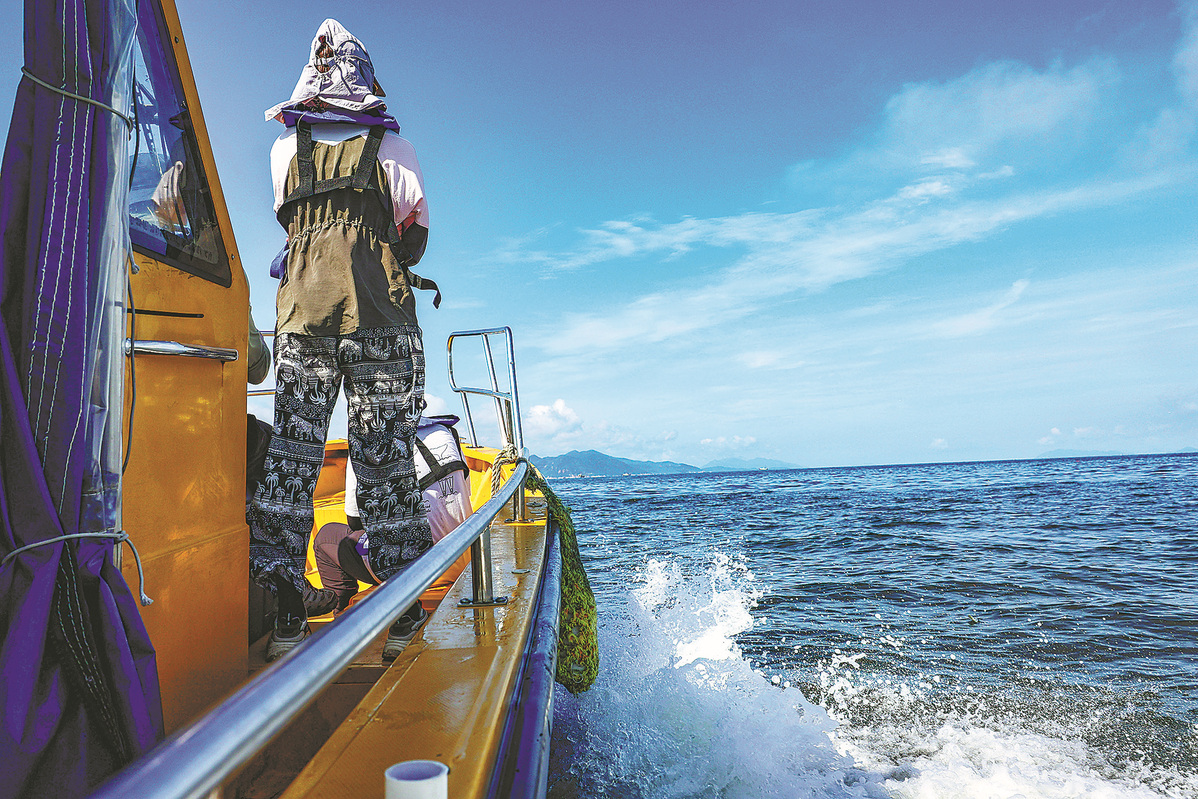
Agathe Serres looks out for Chinese white dolphins on her research vessel on Aug 24. LIU QICHENG/SANYA DAILY
In that regard, the green model of development taken by the Hainan Free Trade Port in the southern island province not only means industry and economic growth, but also ecological and environmental advancement, fostering a shared beauty between humans and marine life, and reflecting a harmonious coexistence between people and nature, she said.
Serres said she also hopes to work alongside her friends in China to create a safer, more harmonious and joyful home for the "pandas of the ocean … allowing the beautiful and miraculous song of their lives to play on forever".
Lu Jubo and Chen Chaoquan from Sanya Daily and Zhao Hairuo contributed to this story.
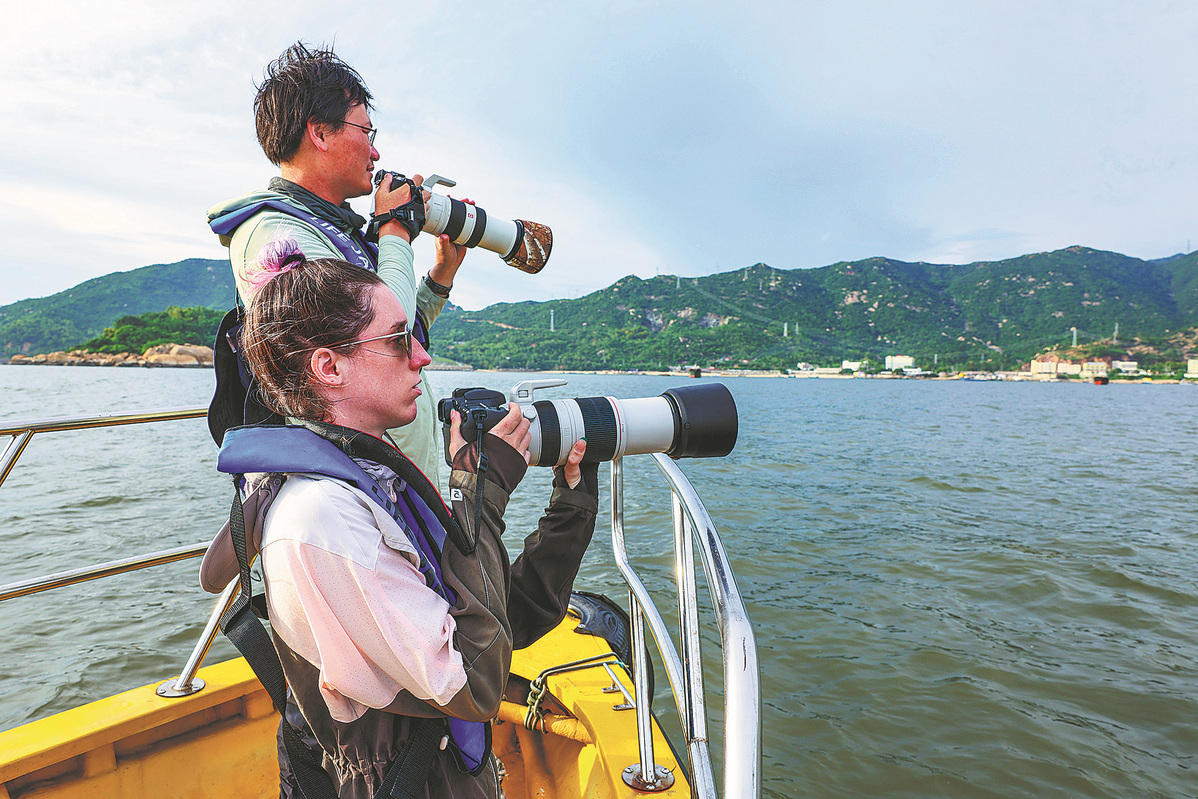
Agathe Serres looks for Chinese white dolphins on her research vessel in Jiangmen on Aug 24. LIU QICHENG/SANYA DAILY

French researcher Agathe Serres at the Cetacean Specimen Museum of the Institute of Deep-sea Science and Engineering of the Chinese Academy of Sciences in Sanya, Hainan province, on Aug 16. LIU QICHENG/SANYA DAILY

A researcher measures the temperature of the seawater around Jiangmen on Aug 23. LIU QICHENG/SANYA DAILY

French researcher Agathe Serres operates a drone to film Chinese white dolphins around Jiangmen on Aug 23. LIU QICHENG/SANYA DAILY

The research vessel sonar equipment used to locate dolphins is shown at Jiangmen on Aug 24. LIU QICHENG/SANYA DAILY

Researchers Agathe Serres and Li Songhai at the Institute of Deep-sea Science and Engineering in Sanya, Hainan province, on Oct 10. LIU QICHENG/SANYA DAILY